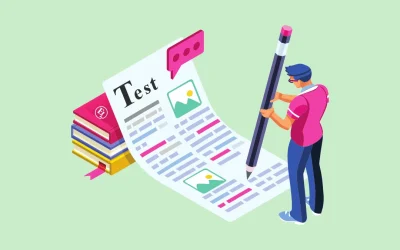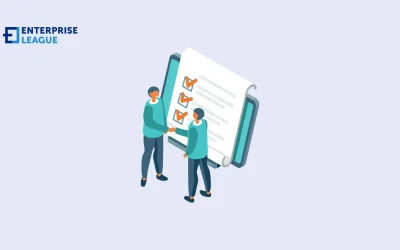A consulting proposal is a vital document that defines the scope of services a consultant will offer to a potential client. It serves as a structured plan for collaboration, ensuring both parties have a clear understanding of expectations, deliverables, timelines, and costs.
A well-crafted proposal can determine whether you win a valuable contract or miss out on a business opportunity. Using a consulting proposal template simplifies the process by providing a ready-made framework that includes all essential details, ensuring consistency and professionalism. It saves time and helps consultants present their solutions in a clear, persuasive, and organized manner.
A strong proposal showcases the consultant’s expertise, demonstrates deep understanding of the client’s needs, and outlines a tailored strategy for success. In this guide, we will examine the essential components of an effective consulting proposal and share practical tips on how to craft a compelling and client-focused document.
Key elements of a consulting proposal
To create a compelling consulting proposal, you need to include several key components. Here’s what a solid consulting proposal should contain:
1. Cover page
The cover page sets the first impression. It should include:
- Your company name and logo
- The client’s name and company
- Proposal title (e.g., “Marketing Strategy Consulting Proposal”)
- Date of submission
2. Executive summary
The executive summary provides a brief overview of the proposal. It should include:
- A summary of the client’s problem
- How your consulting services will address their needs
- Expected outcomes
3. Problem statement
This section demonstrates your understanding of the client’s pain points. It should be based on thorough research and conversations with the client. Clearly define the challenges the client is facing and explain why they need your expertise.
4. Proposed solutions
This is the core of your proposal. Outline your approach to solving the client’s problems, including:
- Your methodology
- The specific strategies or tools you’ll use
- Why your approach is the best fit for the client
5. Project scope and deliverables
Here, you define what’s included in your consulting services. Clearly specify:
- The tasks you will perform
- Expected deliverables (e.g., reports, training sessions, strategies)
- What is not included to avoid misunderstandings
6. Timeline and milestones
Break down the project into phases with estimated completion dates. A timeline helps set clear expectations and keeps the project on track.
7. Pricing and payment terms
This section outlines your fees and payment schedule. Consider including:
- Hourly or fixed rates
- Payment milestones (e.g., 50% upfront, 50% upon completion)
- Additional costs, if applicable
8. Terms and conditions
This section covers legal and contractual aspects, including:
- Confidentiality agreements
- Termination clauses
- Intellectual property rights
Steps to create an effective consulting proposal
Creating a compelling consulting proposal requires careful planning to ensure clarity, professionalism, and persuasion. Start by thoroughly researching the client’s business, industry, and specific challenges to customize the proposal. Then, organize your proposal with a logical flow, beginning with an engaging executive summary and clearly defining the problem, solution, and expected outcomes.
Using a professional format and design is important, as a visually appealing document builds credibility and improves readability. Write persuasively and concisely, avoiding unnecessary jargon while focusing on showing the value of your services. Each section should address how your expertise will solve the client’s problems efficiently. Including relevant data, case studies, or testimonials can strengthen your proposal by showing past successes.
Clear timelines and milestones create transparency and help manage client expectations. Present pricing clearly, with payment terms that match the scope of work while remaining flexible. Before submitting, carefully proofread and edit your proposal to remove errors and improve clarity.
Following up with the client after submission shows dedication and can increase your chances of winning the contract. These steps will help you create a strong consulting proposal that gets results and secures new business.
Consulting proposal template example
Here’s a simple consulting proposal template you can use:
[Your Name/Company Name]
[Your Contact Information]
[Client Name]
[Client Company]
[Date]
Subject: [Consulting Proposal Title]
Executive summary
[Briefly describe the client’s problem and your proposed solution]
Problem statement
[Define the client’s pain points]
Proposed solutions
[Outline your consulting approach]
Project scope and deliverables
[Specify what the client will receive]
Timeline and milestones
[Break down the project into phases]
Pricing and payment terms
[Detail your rates and payment structure]
Terms and conditions
[Include legal and contractual details]
Common mistakes to avoid
- Being too generic: A one-size-fits-all proposal lacks personalization. Tailor each proposal to the specific client.
- Ignoring the client’s pain points: Focus on solving their unique problems rather than just listing your services.
- Overcomplicating the language: Use clear and concise language. Avoid unnecessary technical jargon.
- Not outlining clear deliverables: Clearly state what the client will receive to avoid misunderstandings.
A well-crafted consulting proposal is an essential tool for securing new clients and building lasting business relationships. By clearly defining client problems, offering tailored solutions, and setting transparent expectations, you demonstrate professionalism and reliability. A structured approach, with clear organization and appealing format, makes your proposal easier to understand and more convincing.
Customization matters – adapting each proposal to address specific client needs increases approval chances. Careful proofreading ensures clarity and eliminates errors that could hurt your credibility. A strong proposal shows your expertise while building trust, giving clients confidence in your ability to deliver results.
Following up after submitting reinforces your commitment and creates opportunities for further discussion. With a well-prepared consulting proposal, you can differentiate yourself and improve your chances of winning valuable contracts.





